Ruminant animals have a four-chambered stomach that allows them to digest plant fibers through microbial fermentation. Food is initially chewed and swallowed, passing to the rumen and reticulum where microbes break down cellulose and other plant matter. Nutrients are absorbed and the remaining cud is regurgitated and rechewed before passing to the omasum and abomasum for further digestion and absorption. This unique digestive system relies on microbes in the rumen to break down plant fibers that the animal cannot digest on its own, extracting nutrients that the ruminant then absorbs in the lower stomach and intestines.
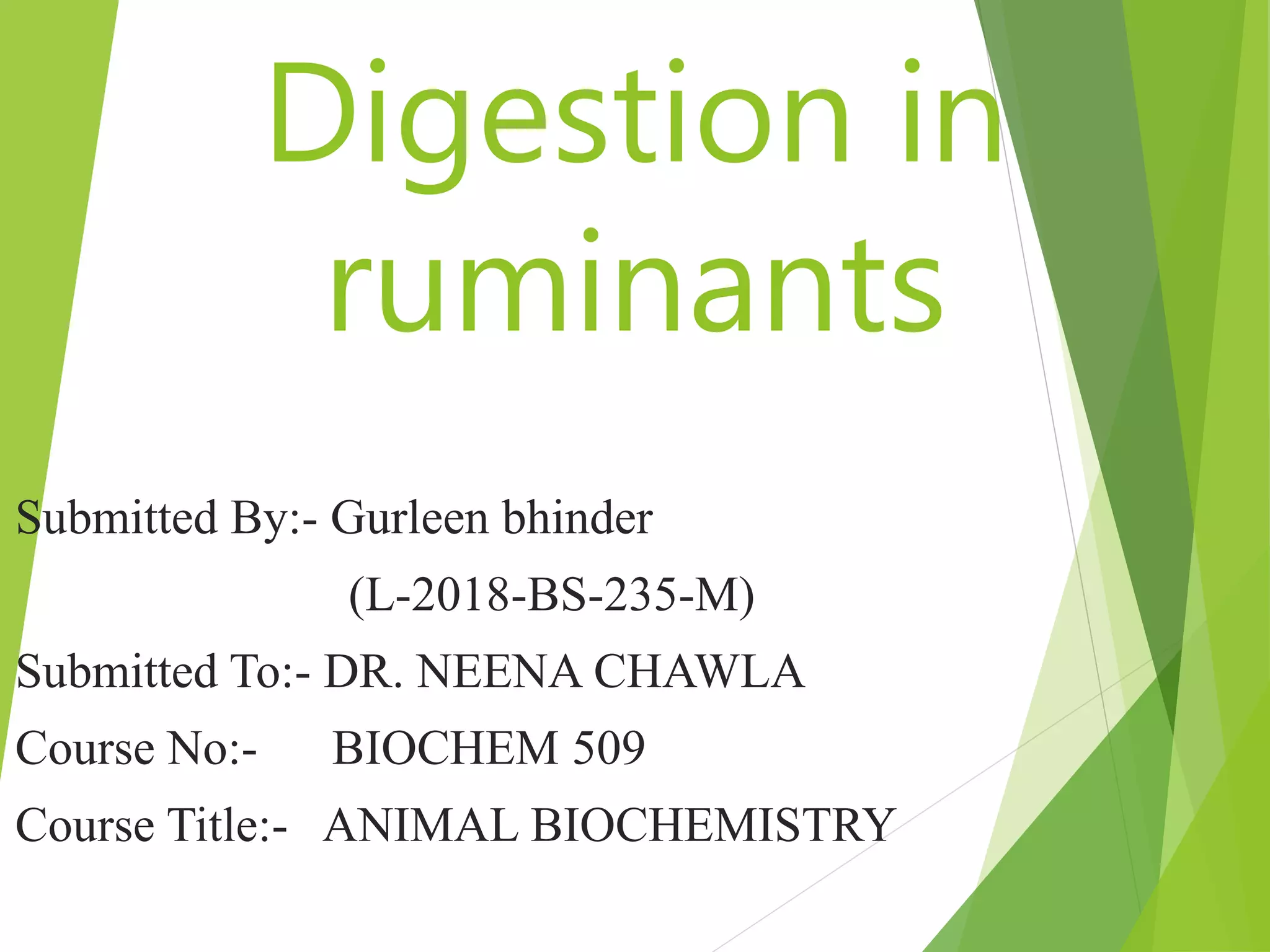
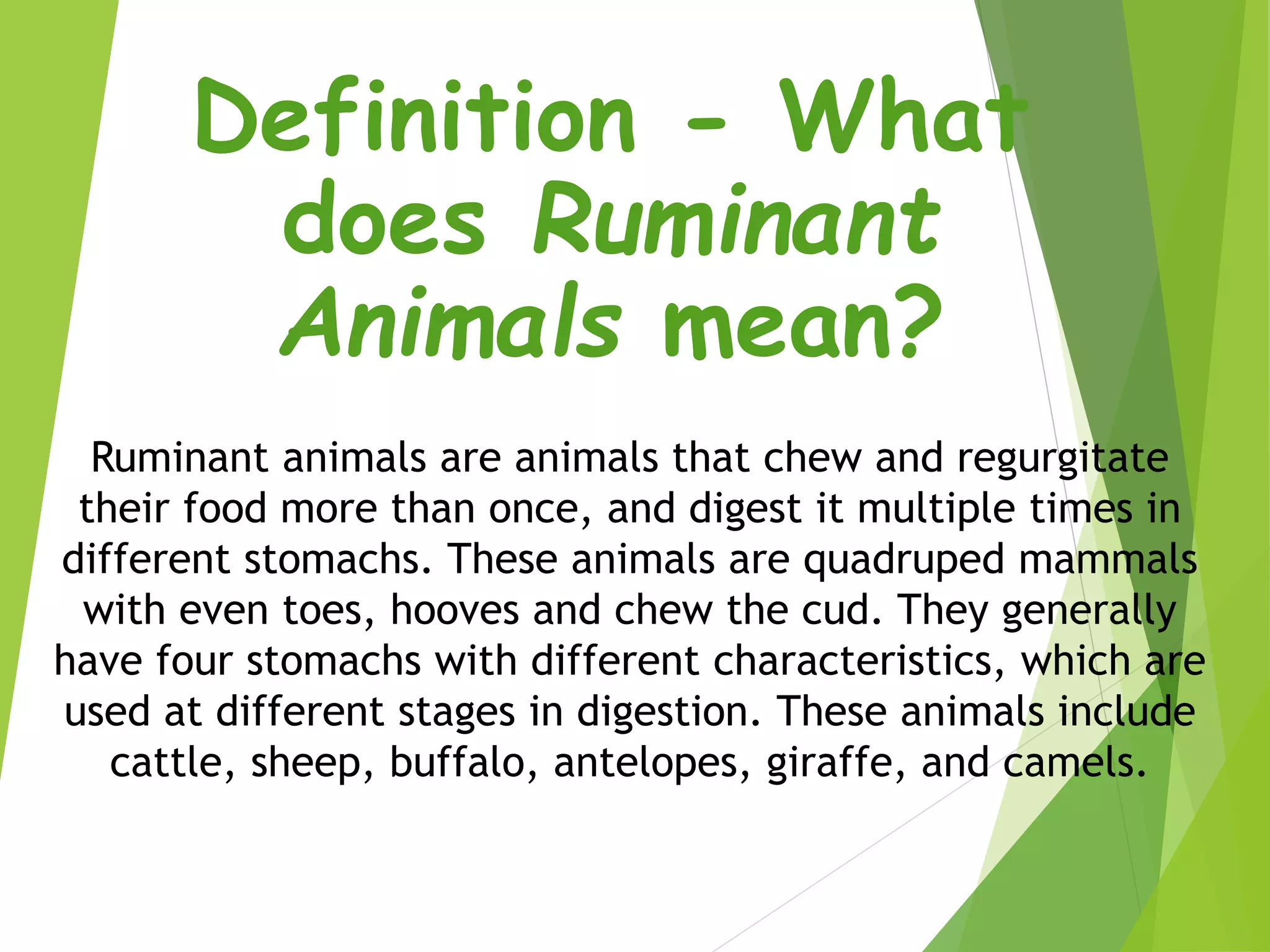
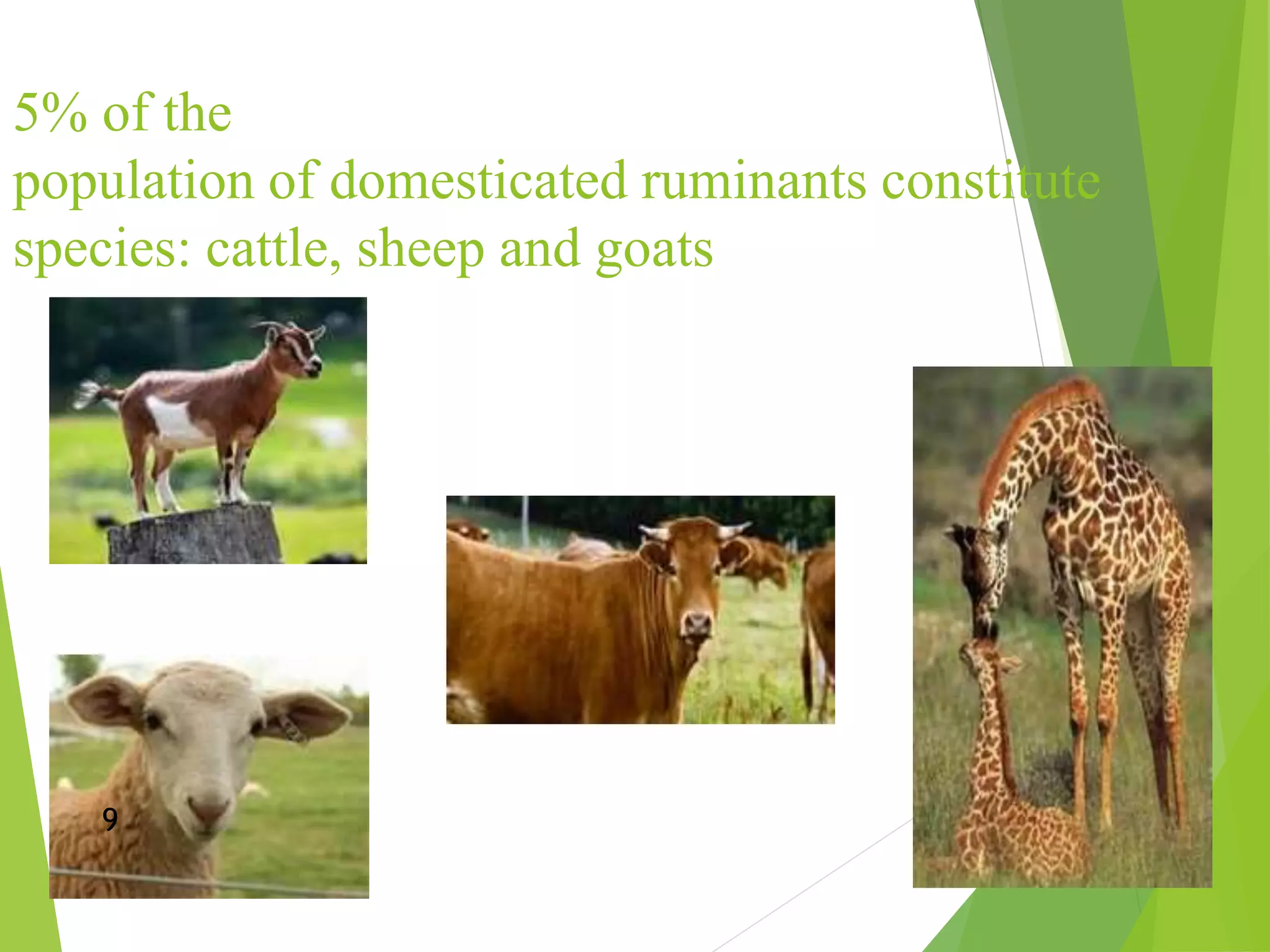
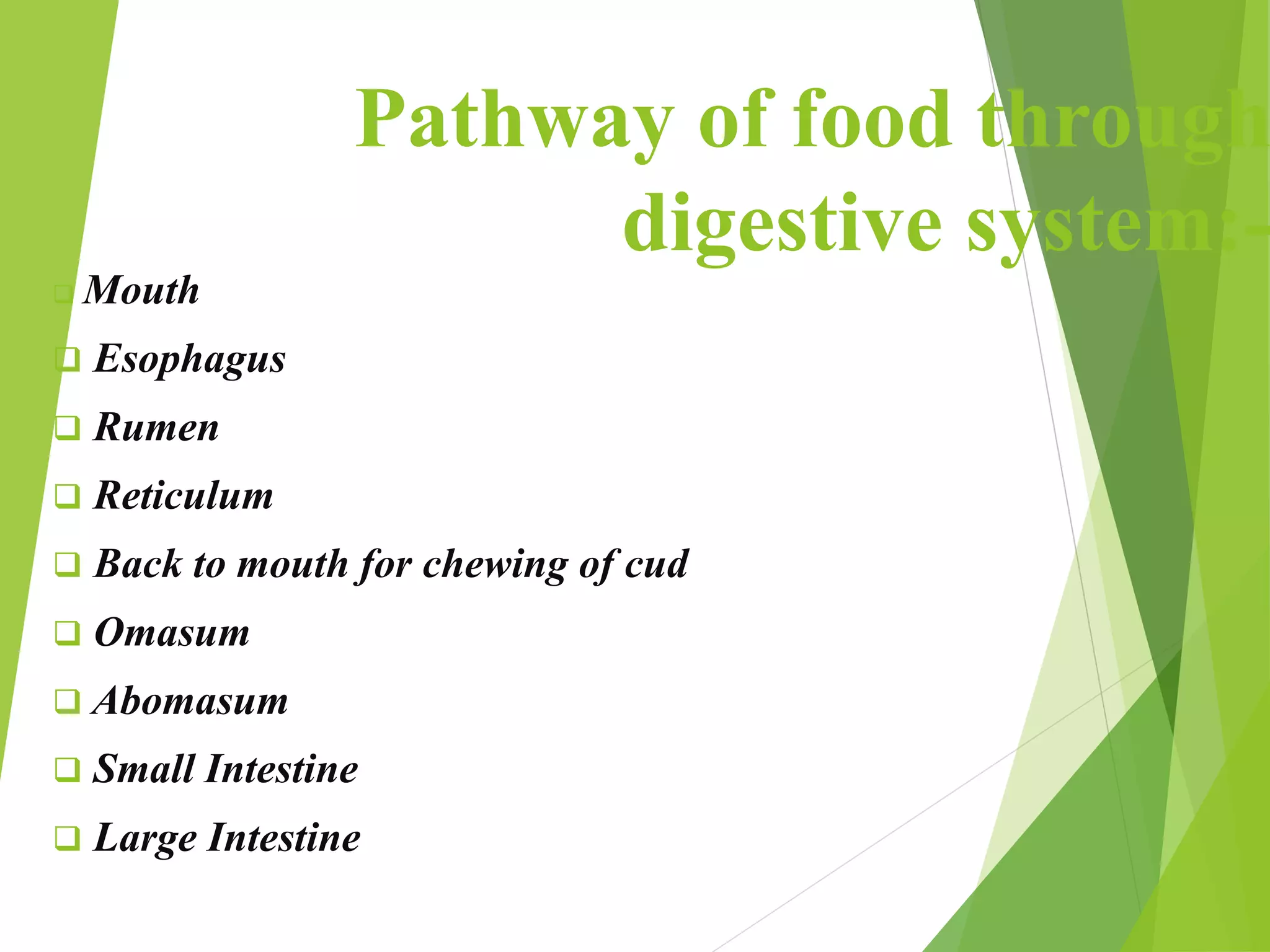
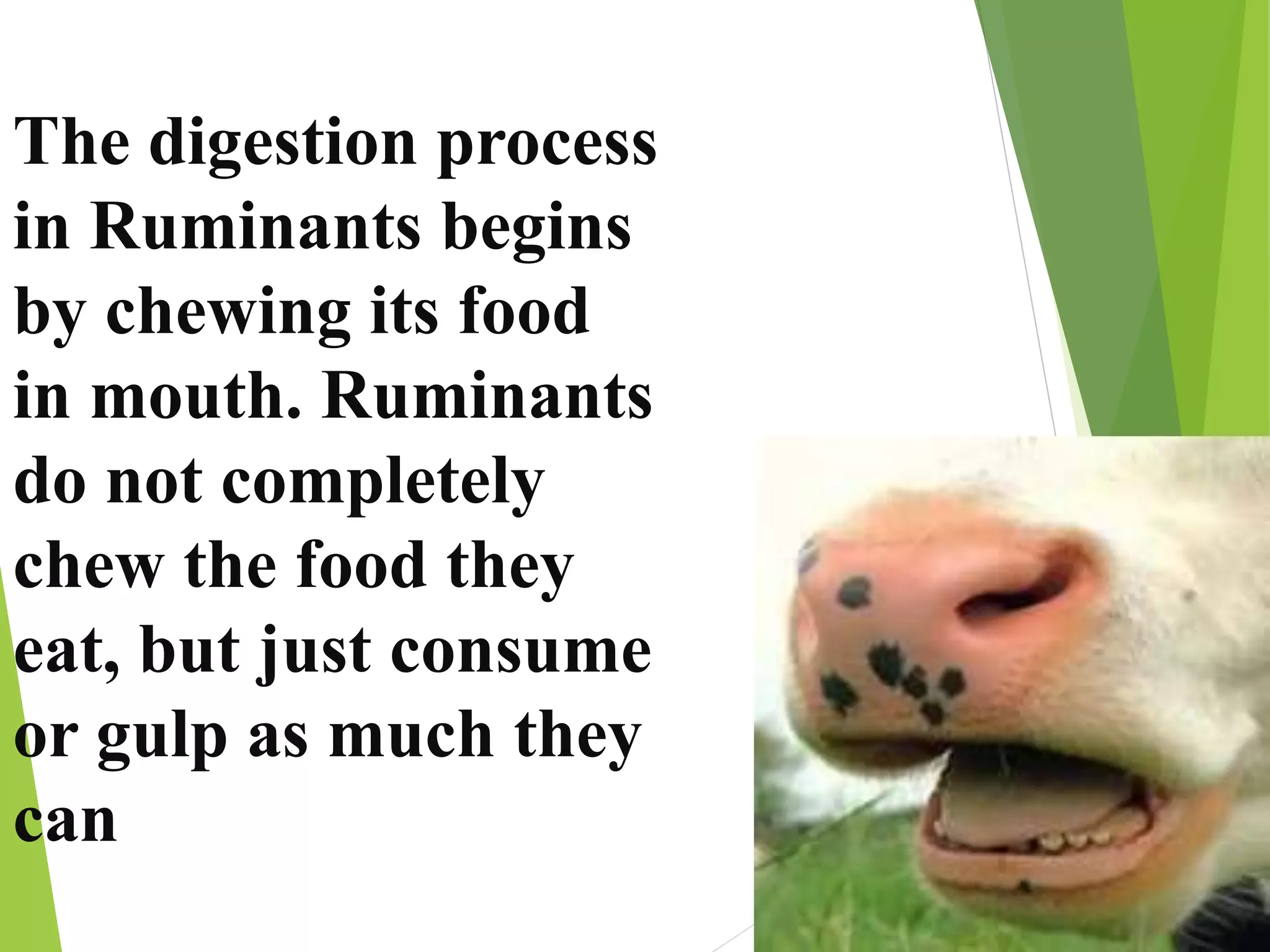

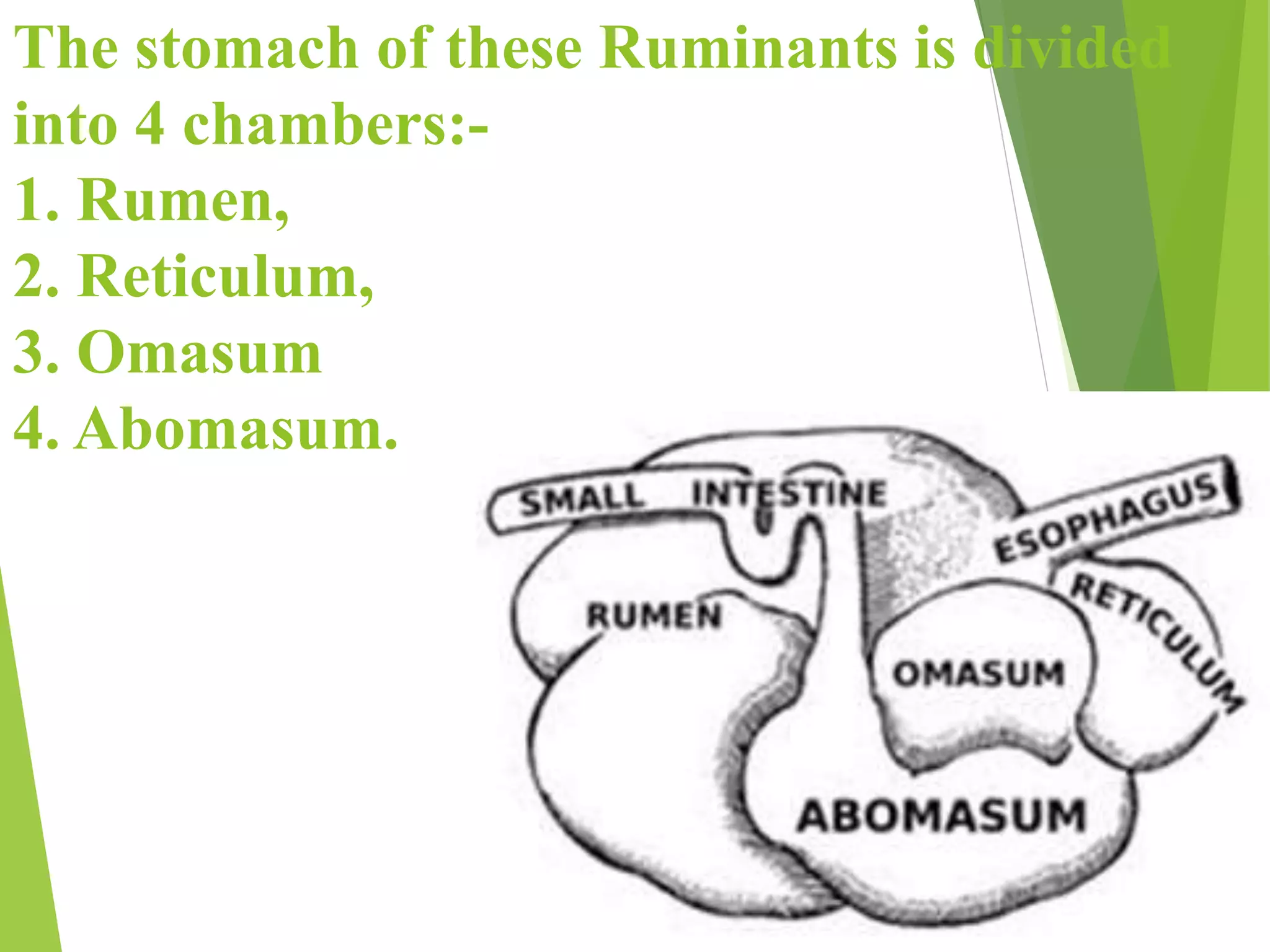

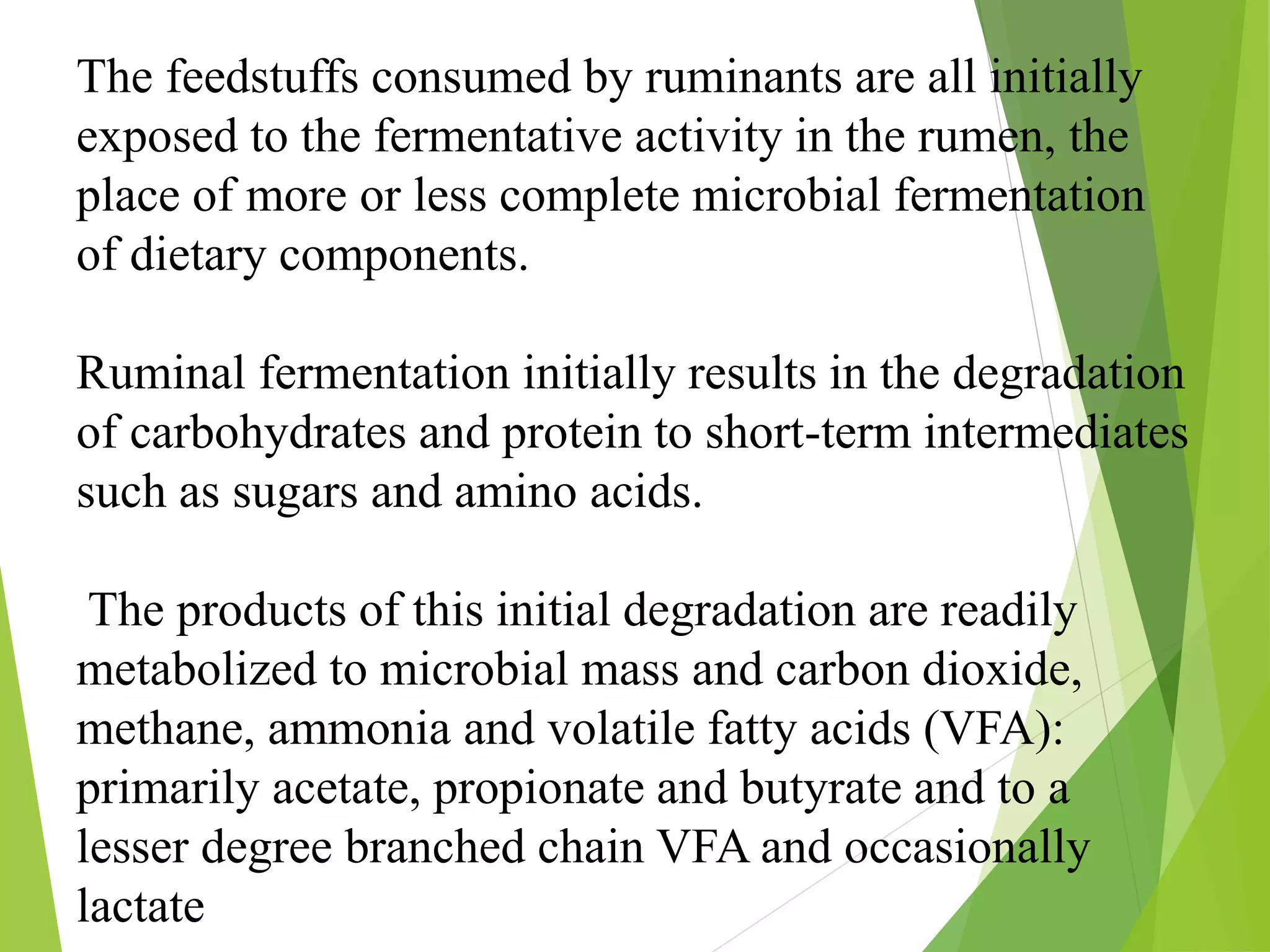




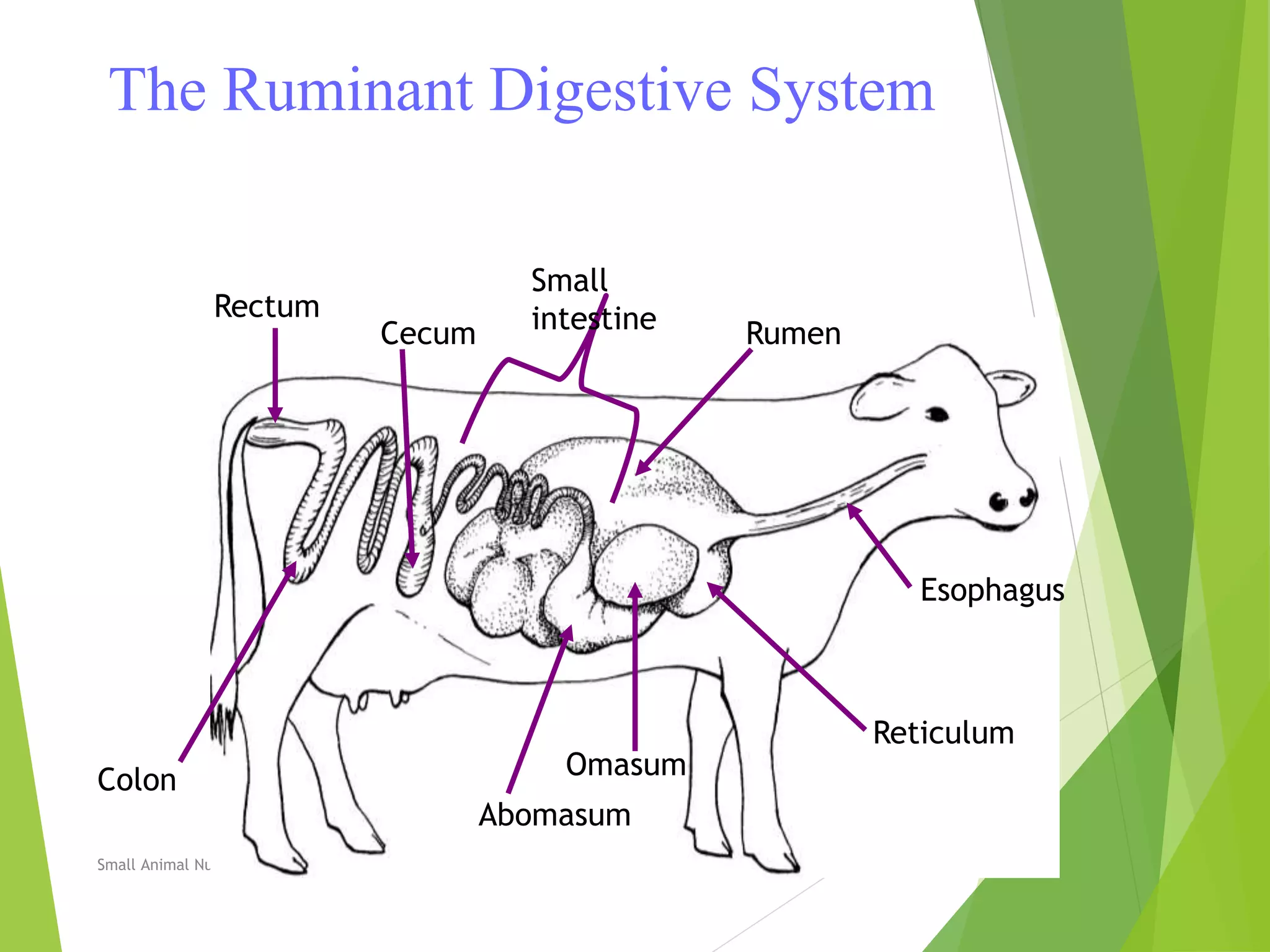

![Vertebrates lack the ability to hydrolyse the beta [1–4] glycosidic
bond of plant cellulose due to the lack of the enzyme cellulase.
Thus, ruminants must completely depend on the microbial flora,
present in the rumen or hindgut, to digest cellulose. Digestion of
food in the rumen is primarily carried out by the rumen microflora,
which contains dense populations of several species of bacteria,
protozoa, sometimes yeasts and other fungi – 1 ml of rumen is
estimated to contain 10–50 billion bacteria and 1 million protozoa,
as well as several yeasts and fungi.
Since the environment inside a rumen is anaerobic, most of these
microbial species are obligate and facultative anaerobes that can
decompose complex plant material, such as cellulose,
hemicellulose, starch and proteins. The hydrolysis of cellulose
results in sugars, which are further fermented to acetate, lactate,
propionate, butyrate, carbon dioxide, and methane.](https://image.slidesharecdn.com/ruminantassignment509gurleen-190518035002/75/ruminant-animals-16-2048.jpg)

